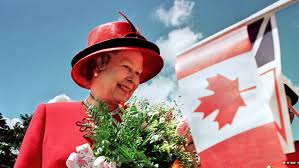November 30, 2020
Leadership Profile: Queen Elizabeth II (Queen of Canada)
Born in 1926, Elizabeth was the elder daughter of King George VI. The princess’s education was supervised by her mother, who entrusted her daughters to a governess, Marion Crawford; and Professor C.H.K. Marten, as well as, visiting teachers in music and languages. During World War II she and her sister, Princess Margaret spent much of their time separated from their parents. Once she turned 18, Elizabeth served as a driver and mechanic in the Armed forces.
Early in 1947 Princess Elizabeth was engaged to Lieutenant Philip Mountbatten of the Royal Navy, formerly Prince Philip of Greece and Denmark. The marriage took place in Westminster Abbey on November 20, 1947. Their first child, Prince Charles was born November 14, 1948, at Buckingham Palace.
In the summer of 1951 the health of King George VI entered into a serious decline. Upon the death of her father, on February 6, 1952, Elizabeth became Queen. As fate would have it, at the age of 25, Elizabeth became the 6th female to ascend the throne. Despite the grief and shock of her father’s passing, Queen Elizabeth II carried the weight of her calling with graceful aplomb.
Lifetime commitment
Philip Ziegler, author of George VI: The Dutiful King, describes the Queen as having “a crippling sense of duty”, and it was a duty she committed herself to fulfilling for the rest of her life. As the world’s current longest-reigning living monarch, she has enjoyed a positive public image in Britain and throughout the Commonwealth nations.
It’s partly due to her extraordinary ability to balance respecting traditions and customs with creating a reign that leads the way in embracing modern life and social change. The Queen has been proactive throughout her reign in lending her patronage to over 600 charities, military associations and public service organisations.
Since the time of her coronation, she has taken her public service work seriously and continues to keep a thriving daily schedule. In her weekly, confidential meetings with her Prime Ministers throughout the years, Queen Elizabeth II has been known to be a great source of wisdom and reassurance.
Leadership
Her leadership style embraces four key leadership lessons that are universal:
1. Be adaptable and embrace change: When the Queen ascended the throne in 1953, she overruled the original decision to have the ceremony broadcast on radio, insisting that her coronation at Westminster Abbey be televised. As it turned out, her decision proved to be a popular one among the public, as many got a glimpse at one of the world’s most historic ceremonies. She has constantly evolved since that initial key decision.
2. Keep calm and be a leader! During the Queen’s reign – which has included 15 Prime Ministers, seven Popes, and about a quarter of all American Presidents – she has witnessed and endured challenges both on a personal and national scale. However, the Queen is famous for her quiet stoicism and unyielding spirit, and exemplifies courage and diligence.
In the aftermath of the Jul 7, 2005 terrorist bombings of London’s public transport system, she addressed the country in a call for everyone to stand together in the face of adversity, saying, “Atrocities such as these simply reinforce our sense of community, our humanity and our trust in the rule of law.”
3. Always ask questions. Interestingly, the Queen has a very inquisitive and curious mind. When she is out meeting Prime Ministers or members of the public, she constantly asks a lot of questions. The better way to find out about a situation is to ask questions – and then listen.
4. Have a clear purpose and be committed to it. In her coronation speech on her 21st birthday, the Queenstated,“I declare before you all that my whole life whether it be long or short shall be devoted to your service and the service of our great imperial family to which we all belong.”
She set the vision at that age, and with a sense of great duty, has fully committed to a lifelong responsibility. Today, she has remained fully committed to the lifelong oath she took, and continues to keep hundreds of engagements, as well as providing her support for many charity organisations and associations.
Concluding thoughts
On September 9, 2015, Queen Elizabeth surpassed Victoria’s record reign of 63 years and 216 days. She is known to favour simplicity in court life and is also known to take a serious and informed interest in government business, aside from the traditional and ceremonial duties.
At 94 years of age, Her Majesty continues her leadership steadfastly as a focus for national identity, unity and pride. Her presence in the monarchy gives a sense of stability and continuity, a vital element in nation-building. To her, age seems to be just a number!



